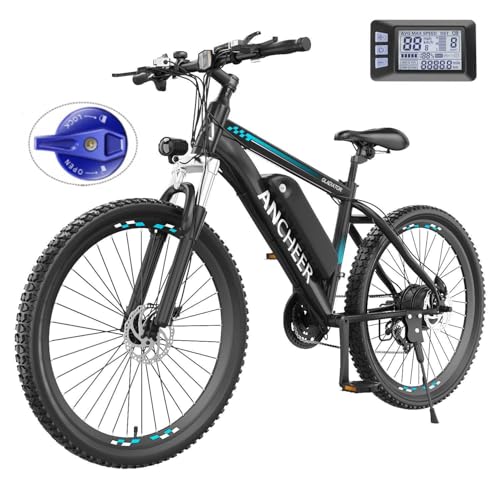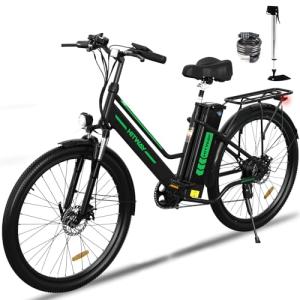Electric bicycles, commonly known as e-bikes, represent a revolutionary step in the evolution of personal transportation. Combining the traditional mechanics of bicycles with the modern innovation of electric motors, e-bikes offer a unique blend of exercise, eco-friendliness, and efficiency. This article delves into the world of e-bikes, exploring their technology, benefits, impact on society, and future prospects.
The Technology Behind E-Bikes
At the heart of an e-bike is its electric motor. This motor, typically powered by a rechargeable lithium-ion battery, assists the rider's pedaling effort. Most e-bikes come with a control system allowing riders to adjust the level of assistance. From barely perceptible boosts to more significant power input, the motor can adapt to various riding conditions and preferences.
The battery's capacity, often measured in watt-hours (Wh), dictates the range of the e-bike. Advances in battery technology have significantly increased these ranges, with many modern e-bikes capable of covering over 50 miles on a single charge.
Moreover, e-bikes often come equipped with sophisticated sensors. These include torque sensors, which measure the force applied to the pedals, and cadence sensors, which monitor the pedaling rate. These sensors work in tandem with the motor, ensuring a smooth and intuitive riding experience.
Benefits of E-Bikes
Health and Fitness
While e-bikes provide motor assistance, they still offer considerable health benefits. Riding an e-bike involves physical exertion, albeit less strenuous than traditional cycling. This makes them an excellent option for individuals looking to maintain or improve their fitness levels, particularly those who might find traditional cycling too demanding.
Environmental Impact
E-bikes are lauded for their minimal environmental footprint. They emit no pollutants, making them a clean alternative to motor vehicles. By reducing reliance on fossil fuels, e-bikes contribute to decreased air pollution and greenhouse gas emissions.
Accessibility and Inclusivity
One of the most significant advantages of e-bikes is their accessibility. They open up cycling to a broader range of people, including older adults, those recovering from injuries, or individuals who are not physically fit. This inclusivity fosters a more diverse cycling community and encourages more people to consider cycling as a viable mode of transportation.
Urban Transportation
In urban areas, e-bikes offer a practical solution to common problems such as traffic congestion and parking shortages. They can navigate through traffic more easily than cars and require far less parking space. Additionally, many cities have started to integrate e-bike-friendly infrastructure, such as dedicated bike lanes, further enhancing their viability as an urban transportation option.
Societal Impact
The rise of e-bikes has led to a noticeable shift in how people approach transportation, especially in urban settings. They are increasingly seen as a credible alternative to cars for short to medium distances. This shift has implications for urban planning, with a growing emphasis on bike-friendly infrastructure.
Furthermore, e-bikes are playing a crucial role in the gig economy, particularly for delivery services. Their efficiency and low operational costs make them ideal for couriers and delivery personnel.
Future Prospects
The future of e-bikes looks bright, with continuous advancements in technology promising even more efficient and user-friendly models. Battery technology, in particular, is an area of significant potential, with research focusing on increasing capacity and reducing charging times.
Another exciting development is the integration of smart technology. Future e-bikes might feature advanced navigation systems, integrated fitness tracking, and even connectivity with other smart devices.
Challenges and Considerations
Despite their many benefits, e-bikes face challenges, including regulatory issues. Laws governing e-bike usage vary widely by region, and there is often confusion about where they can be ridden and whether they require special licensing.
Safety is another concern. As e-bikes allow for higher speeds than traditional bikes, there is a need for heightened awareness and potentially more stringent safety measures.
Lastly, the cost of e-bikes, which tends to be higher than traditional bicycles, can be a barrier for some potential users. However, as technology advances and becomes more widespread, prices are expected to become more accessible.
Electric bicycles stand at the intersection of technology and sustainability, offering a promising solution to many of today's transportation challenges. By providing a flexible, efficient, and eco-friendly mode of travel, they are not just a means of transportation but a symbol of a more sustainable and inclusive future.
The proliferation of e-bikes is a testament to humanity's ongoing quest for innovative solutions to balance our mobility needs with environmental and societal considerations. As we continue to advance in technology and sustainability, e-bikes will undoubtedly play a pivotal role in shaping the future of personal transportation.







